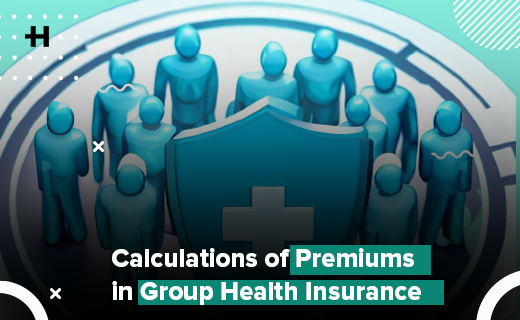Group health insurance is a crucial part of employee benefits, aiding businesses in attracting and retaining top talent. In this guide, we explore the factors influencing group health insurance premiums and the two primary premium calculation methods. We also discuss how industry, occupation, dependents, and plan design impact premium pricing. Understanding these aspects enables informed decisions on optimizing group health insurance coverage for your organization.
Table of Contents
Understanding Group Health Insurance
Group health insurance is a type of health coverage that businesses offer to their employees and, in some cases, to their dependents. It is a valuable part of the compensation package for employees and can help businesses attract and retain top talent.

Understanding Premiums in Group Health Insurance
Premiums in group health insurance refer to the amount of money paid by an employer or employee to an insurance provider in exchange for coverage. These premiums are typically paid on a regular basis, such as monthly or annually, and contribute to the overall cost of the insurance plan.
The primary purpose of premiums is to fund the healthcare benefits provided to the insured individuals within the group. These benefits may include coverage for medical services, hospitalization, prescription medications, preventive care, and other healthcare needs. The premium amount is determined based on various factors, including the age and health status of the group members, geographic location, industry, coverage type, and previous claim experience.
Factors Influencing Group Health Insurance Premiums
Various elements play a role in determining group health insurance premiums. Here are the most significant factors:
Your employees’ average age
To begin with, the average age of your workforce assists an insurer in determining the premium cost. This is predicated on the assumption that the number of claims for a younger workforce will be lower than for an older population. Younger members are more likely to be healthier, to have fewer chronic diseases, and to have a higher level of immunity.
So, if the majority of your staff is between the ages of 19 and 25, your premium cost will be substantially lower than if the average age is between the ages of 36 and 45.
Health History and Habits
The overall health and habits of the group members also influence premium rates. If a group has a high prevalence of chronic diseases or unhealthy habits like smoking, the insurer may charge higher premiums.
Geographic Location
Healthcare costs can vary based on location, and this can impact premium rates. Areas with higher healthcare costs generally lead to higher premiums.
Size of the Group
Larger groups often have lower per-person premiums because the risk is spread out over more individuals.
Premium Calculation Methods
Insurers use several methods to calculate group health insurance premiums. The two most common are the community rating and experience rating.
Community Rating
In a community rating system, insurers set premiums based on the overall health status and demographic factors of the community where the group is located.
Experience Rating
In an experience rating system, insurers base premiums on the group’s past health insurance claims. Groups with a higher history of claims will generally pay higher premiums.
The Role of Industry and Occupation in Premium Calculation
The nature of the industry and the specific occupations within the group can significantly impact premiums. Certain industries or jobs may pose a higher risk for health issues, which can lead to increased premiums.
High-Risk Occupations
Jobs with high physical demands or exposure to hazardous conditions can result in higher group health insurance premiums. This is due to the increased risk of injury or illness.
Stressful Work Environments
Jobs with high stress levels can also lead to higher premiums. Stress can contribute to various health issues, including mental health disorders, cardiovascular disease, and other chronic conditions.
Dependents and their Impact on Premiums
Adding dependents to a group health insurance plan can also influence the premiums. Typically, adding dependents increases the total premium, but it may not significantly impact the per-person cost.
Plan Design and Premiums
The specific design of the group health insurance plan is another crucial factor in determining premiums. This includes the type of plan, coverage levels, deductibles, and out-of-pocket maximums.
Type of Plan
The plan type, whether it’s a Health Maintenance Organization (HMO), Preferred Provider Organization (PPO), or another type, can influence premiums. Each type has its own cost structure and network restrictions, affecting the premium pricing.
Coverage Levels
Plans with more extensive coverage will generally have higher premiums. This includes plans that cover more types of healthcare services or have lower deductibles or out-of-pocket maximums.
Coverage Types
You can provide your employees with one of three types of group health insurance. They are as follows:
E-plan: Covers just employees.
Employees, spouses, and up to four dependent children are covered under the ESC-plan.
Employees, spouses, up to four dependent children, and two parents are all covered under the ESCP plan.
Your premium is computed based on the one you choose. Needless to say, the higher the cost, the more dependents you add. Because premiums are calculated based on the total number of lives insured by the insurance. So, the ESCP-plan will be the most expensive, while the E-plan will be the least expensive.
Explore Healthysure for comprehensive employee benefits! Our platform offers affordable premiums for all kinds of businesses!
Conclusion
Group health insurance is a valuable tool for businesses to provide comprehensive healthcare coverage to their employees and dependents. By considering factors such as age, health history, geographic location, and group size, employers can effectively manage premium costs. Understanding the premium calculation methods of community rating and experience rating provides insight into how insurers determine pricing. Additionally, considering industry and occupation risks, the impact of dependents, and the design of the insurance plan allows businesses to tailor coverage to their specific needs. By grasping these key aspects, organizations can make informed decisions that promote the well-being of their workforce while effectively managing costs.




